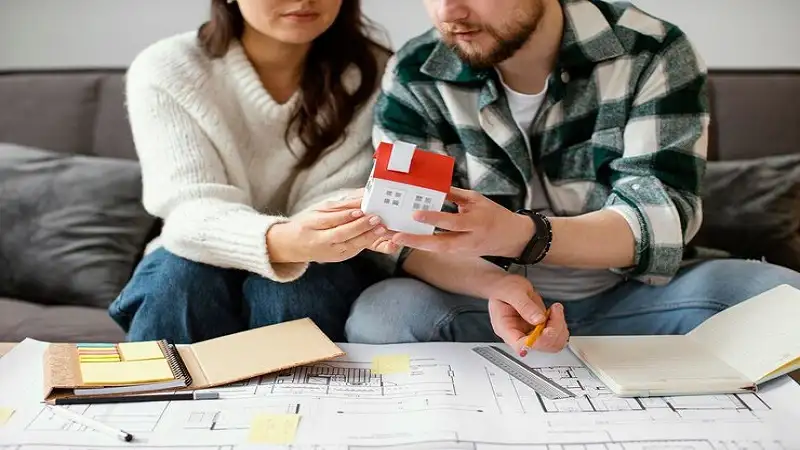Building your dream home is one of the most exciting yet challenging journeys you can undertake. From choosing the right plot to selecting finishes, each decision shapes the final outcome. Here’s a comprehensive guide filled with practical tips and tricks to help you navigate the process seamlessly.
Define Your Vision
Before you begin the building process, it’s essential to define what your dream home looks like. Take the time to visualize not only the aesthetics but also the functionality of your space.
Establish Your Needs and Wants
Create a list of must-haves (e.g., number of bedrooms, bathrooms) versus nice-to-haves (e.g., a home office, gym). This clarity will guide your decisions as you proceed.
Consider Future Needs
Think about how your needs may change in the future. Will your family grow? Will you require an elderly-friendly layout? Planning ahead can save you from costly adjustments later on.
Set a Realistic Budget
Budgeting is crucial in home building. It ensures that your dream does not turn into a financial nightmare.
Understand All Costs Involved
Beyond construction, consider costs for permits, land surveys, utility connections, landscaping, and interior finishes. A comprehensive budget should encompass these aspects.
Include a Contingency Fund
Unexpected expenses are inevitable in construction. Setting aside 10-15% of your total budget as a contingency fund can provide a safety net for any surprises.
Choose the Right Location
The location of your new home affects everything from daily commutes to property value. Choosing wisely can enhance your living experience significantly.
Research Neighbourhoods
Investigate various neighborhoods based on your lifestyle. Consider factors such as schools, amenities, safety, and community vibe. Visit at different times to get a true sense of the area.
Evaluate Land Options
Once you narrow down your preferred neighborhoods, assess available plots. Look for land with good drainage, sufficient sunlight, and proximity to essential services.
Work with Professionals
While DIY projects can be rewarding, building a home is often best left to professionals.
Hire an Architect
An architect can help you bring your vision to life while ensuring that your home is functional and aesthetically pleasing. They can also assist in navigating zoning laws and building codes.
Select a Reliable Contractor
Research and interview multiple contractors. Look for references, previous work, and reviews. A good contractor not only builds your home but also communicates effectively throughout the process.
Plan the Layout
The layout of your home greatly influences how you will use the space. Thoughtful planning can lead to a more comfortable living environment.
Flow and Functionality
Consider how each room connects with others. An open floor plan may enhance family interaction, while separate spaces can provide privacy. Make sure to think about how natural light will enter your home.
Future Flexibility
Design spaces that can adapt over time. For instance, a guest room can later be converted into a nursery or home office.
Select Quality Materials
Quality materials can enhance the longevity and appeal of your home.
Invest in Structural Integrity
Focus on materials that ensure durability, such as reinforced steel or high-quality wood. They may come with a higher upfront cost but can save you money on repairs in the long run.
Choose Energy-Efficient Options
Look for sustainable materials and energy-efficient appliances. These choices can reduce your utility bills and contribute to a healthier environment.
Embrace Smart Technology
Integrating smart technology into your home can enhance convenience and security.
Home Automation Systems
Consider installing systems that allow you to control lighting, heating, and security remotely. These systems can improve your quality of life and provide peace of mind.
Energy Management Tools
Smart thermostats and energy monitors can help you track and reduce energy consumption, leading to long-term savings.
Focus on Interior Design
The interior of your home should reflect your personal style while being functional.
Create a Cohesive Style
Choose a design style (e.g., modern, rustic, minimalist) and stick with it throughout your home. This will create a harmonious flow and make your space feel more cohesive.
Select Functional Furniture
Invest in furniture that fits your lifestyle. For instance, if you have kids or pets, durable fabrics and easy-to-clean surfaces are essential.
Pay Attention to Outdoor Spaces
Don’t neglect your outdoor areas; they can enhance your living experience significantly.
Plan for Landscaping
Consider how you want your yard to look and function. Plan for flower beds, trees, and possibly a vegetable garden. Landscaping can improve curb appeal and provide a relaxing retreat.
Design Outdoor Living Areas
Create spaces for entertaining or relaxation, such as patios or decks. Adding outdoor furniture can extend your living space and make your home more inviting.
Stay Involved Throughout the Process
Building a home is a collaborative effort, and your involvement is crucial.
Regular Site Visits
Make it a point to visit the construction site regularly. This allows you to monitor progress, address issues early, and ensure the project stays on track.
Open Communication
Maintain an open line of communication with your contractor and team. This ensures that everyone is on the same page and can help prevent misunderstandings.
Conclusion
Building your dream home is a journey filled with excitement and challenges. By defining your vision, setting a realistic budget, choosing the right location, working with professionals, and paying attention to both the interior and exterior, you can create a space that truly reflects your lifestyle and tastes. Stay involved throughout the process, and remember that the goal is not just to build a house but to create a home where memories will be made for years to come. Happy building!

